We all want to enjoy high-quality produce to get the benefit of the best possible flavor and nutrition. But how?
The first tip in picking the best produce?
Buy in-season at your local farmers' market!
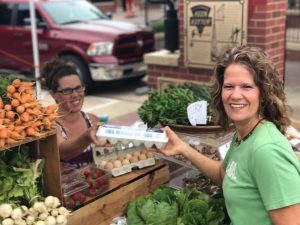 As many know, shopping at the farmers' market is an excellent way to enjoy the amazing flavors of eating in-season. Plus, it will also help you stay healthy and save some money at the same time. But how can you make the most out of your shopping experience?
As many know, shopping at the farmers' market is an excellent way to enjoy the amazing flavors of eating in-season. Plus, it will also help you stay healthy and save some money at the same time. But how can you make the most out of your shopping experience?
Here are a few tips:
- Remember to bring cash and recyclable bags!
- Walk the entire market first to see the variety of what is available.
- Ask the farmers about their produce…ask them when it was harvested and how it was grown.
- Pay attention to prices and quality.
- Use your senses…your eyes, hands, nose, mouth (and even your ears) are all useful in making the best selections!
- For more tips, see our coaching tip on how to shop the Farmers' Market like a pro!
How do you know which asparagus is best?
Asparagus is available in different varieties...green, white and purple. Green is the most common, and purple can be slightly sweeter and it turns green when cooked. You want to look for crisp and bright green stalks, with compact tips. It's a good sign if the stalk snaps when bent. If possible, buy stalks with equal thickness so they will cook evenly. Whether you buy thin or thick stalks is personal preference. Thin stalks are not necessarily more tender than thick ones. If the cut end of the stalk is white or much lighter than the rest of the asparagus, it can sometimes be tough and will need to be broken off before eating. Store asparagus in the refrigerator upright in a large mason jar or container with the bottom 2 inches soaked in water.
Try these:
Asparagus with Catalan Vinaigrette
Grilled Asparagus and Scallions
How do you choose tomatoes?
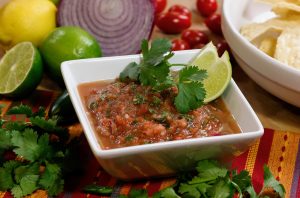 Select tomatoes that are brightly colored, with no bruises or soft spots, and avoid tomatoes with wrinkled skin. It's also best to choose tomatoes that are firm and feel heavy for their size. A good aroma near the stem is also a good sign.
Select tomatoes that are brightly colored, with no bruises or soft spots, and avoid tomatoes with wrinkled skin. It's also best to choose tomatoes that are firm and feel heavy for their size. A good aroma near the stem is also a good sign.
Tomatoes don’t need to look absolutely perfect…in fact, purchasing “seconds” or “still-good-but-on-the-verge-of-going-bad” tomatoes can be a fantastic bargain if you are using them immediately. They are ideal for making flavor-bursting Salsa Fresca or Marinara Sauce! Keep in mind, storing tomatoes at room temperature will make sure they have maximum flavor!
Tips for choosing fresh greens?
Let your eyes and hands be your guide. You want them to have fresh, crisp leaves with vibrant color. Pass on greens that are wilted or have yellow leaves or brown spots. It's always a good idea to rinse greens before eating, to remove any dirt…or the occasional ladybug! And, don't be intimidated by unique greens such as Swiss chard, bok choy, or mustard greens...Eat REAL America has you covered on ideas what do to with them!
Arugula Salad with Orange Sesame Vinaigrette
Cobb Salad with REAL Green Goddess Dressing
How to pick radishes?
Radishes should look fresh and crisp, with few cracks and brown spots. They should feel firm when you squeeze them. If the greens are still intact, they should look fresh and healthy. To store them, cut the radishes away from the stems and leaves and store in an open plastic bag in the refrigerator (leaving the leaves attached can cause moisture and nutrients to be drawn out of the radishes). And, you can use the greens -- they don’t stay fresh very long, so enjoy them within a day or two. If your radishes dry out, you can put them in a bowl of ice water for 5-10 minutes to help their crunch come back to life!
Sweet Orange Roasted Fennel and Radish Salad
Korean Burgers with Pickled Radishes and Onions
Which carrots are the best?
Choose smooth, firm carrots with fresh green leafy tops and avoid carrots that have shoots growing off the ends. Keep in mind, even though some carrots may be small and slender, they can be loaded with fresh flavor!
Some great-tasting ideas:
How do you select rhubarb?
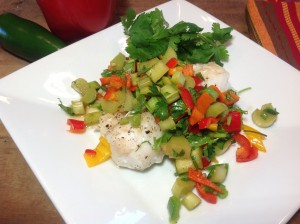 Rhubarb resembles celery stalks and is found in varying colors, from deep ruby red to light green. Some say the red variety is sweeter, but both colors can be prepared, cooked and served the same way. You want to select fresh, firm stalks -- avoid stalks that are dull, limp or bruised.
Rhubarb resembles celery stalks and is found in varying colors, from deep ruby red to light green. Some say the red variety is sweeter, but both colors can be prepared, cooked and served the same way. You want to select fresh, firm stalks -- avoid stalks that are dull, limp or bruised.
Rhubarb leaves can be toxic to humans, so if you purchase it with leaves, immediately remove and discard them. To store, simply place the rhubarb in a plastic bag and store it in the refrigerator. It also freezes well when cut into ¼” to 1” slices. And, rhubarb is not just for dessert...try the White Fish with Rhubarb Salsa or Honey Roasted Rhubarb Salad!
What is the best way to select broccoli?
You want to select broccoli with firm stalks and tight bright green florets. Avoid yellowed florets or ones that are beginning to flower.
 Get creative with this cruciferous veggie:
Get creative with this cruciferous veggie:
Roasted Broccoli with Kicked Up Crumbs
Green Machine Quesadillas with Spicy Chipotle Cream
How do you select cucumbers?
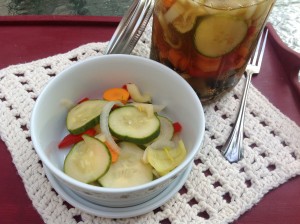 Choose cucumbers that are fairly firm, uniformly green and not soft. They should also not have yellow or soft spots -- you want them crisp and delicious!
Choose cucumbers that are fairly firm, uniformly green and not soft. They should also not have yellow or soft spots -- you want them crisp and delicious!
Grilled Cucumbers with Feta Dipping Sauce
What about eggplant?
There are hundreds of varieties of eggplant, and they are NOT all purple! Overall, it is best to select eggplant that feels firm and heavy for its size. Look for smooth, shiny skin with no blemishes or bruises. The color should be vibrant and the stem and cap should be bright green. Wrinkled or loose skin is an indication of age. To test for ripeness, gently press the skin. If it bounces back, it is ripe, but if it leaves an indentation, it is not ready yet.
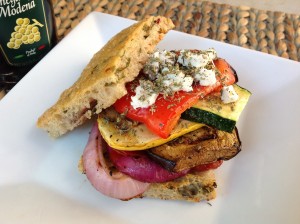 Mediterranean Roasted Eggplant Pasta
Mediterranean Roasted Eggplant Pasta
Eggplant Burgers with Caramelized Shallots
Tips for choosing the best peppers?
Peppers should have smooth shiny skin, with no wrinkles or dark spots. Smooth and firm generally means healthy peppers!
What do you look for in onions?
Choose onions that are firm and dry and avoid those with soft spots. Keep in mind, if the onion odor is overwhelming, it may be turning bad!
Avocado and Spicy Mayo Stuffed Burgers
Green Beans with Charred Onions
Skillet Corn with Zucchini and Onions
How do you know you are choosing the best peaches?
To tell if a peach is ripe, first, take a whiff! It should smell sweetly fragrant! It should also feel heavy and have a rich color. The smell, feel and color are the best indicators of a great peach. If you can't resist the urge to squeeze a peach, make sure it is a gentle squeeze! Peaches bruise easily and, once they are bruised, they begin to breakdown and deteriorate. It is best to select aromatic, non-bruised, peaches with vibrant color.
Summer Basil and Peach Grilled Chicken
 Overall, with any farmers' market produce, let taste be your guide.
Overall, with any farmers' market produce, let taste be your guide.
Try different varieties of fresh produce from different farmers, and then decide which ones you like best.
And, keep in mind, taste can vary based on each season's growing conditions. Most importantly, remember that just about all of produce you get from the farmers’ market will be nutritious and full of flavor!



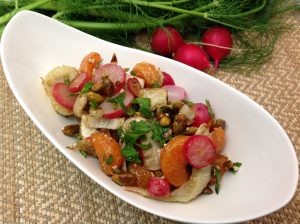

Leave A Comment